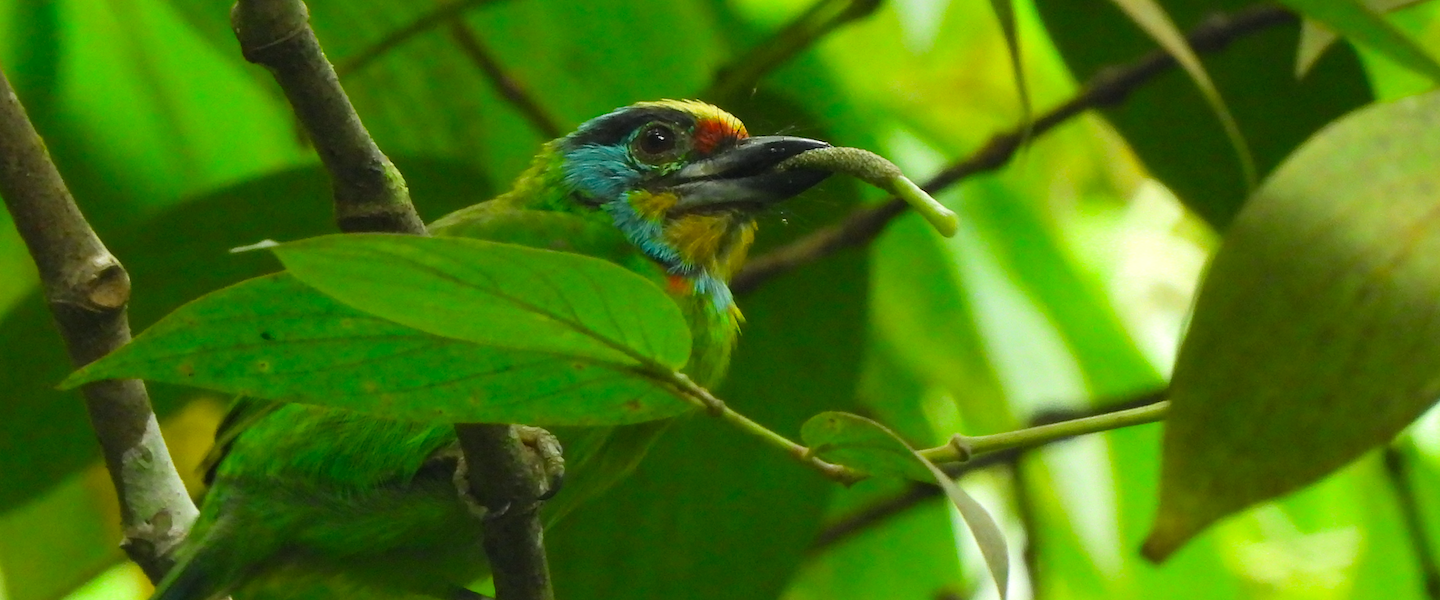The vast plains of the Serengeti–Mara are among the top destinations for nature enthusiasts. Millions of herbivores engaged in the yearly Great Migration cross the Mara River, while large carnivores and hundreds of bird species co-occur in one of the largest continuous grasslands left on the planet. During a University of Helsinki field course, while interviewing Maasai communities around Talek back in February 2024 (read about it here), we set aside one day to get to know this world-class ecosystem.
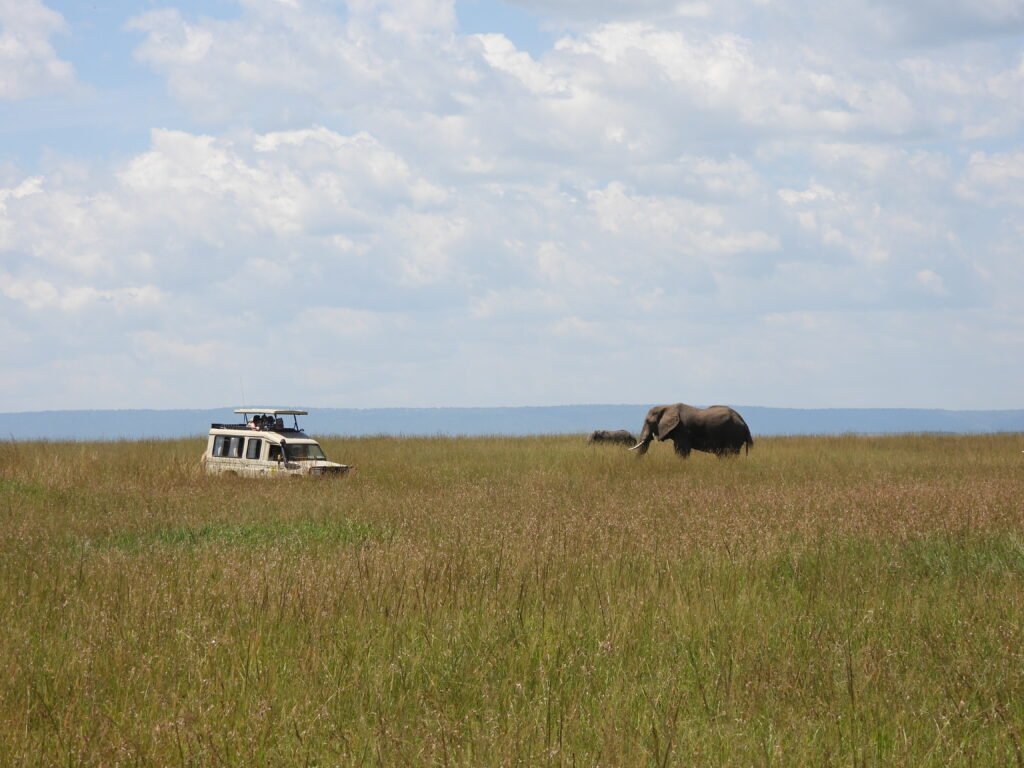
Entering the Maasai Mara is an otherworldly experience. The vastness of one of the world’s largest grasslands stretches to the horizon in all directions, with an endless carpet of green — after recent rains — only punctuated by large herbivores at every distance, in every direction. The largest share of herbivores are on the Tanzanian side of the Mara River at this time of year, but still thousands of mega-herbivores filled the landscape.
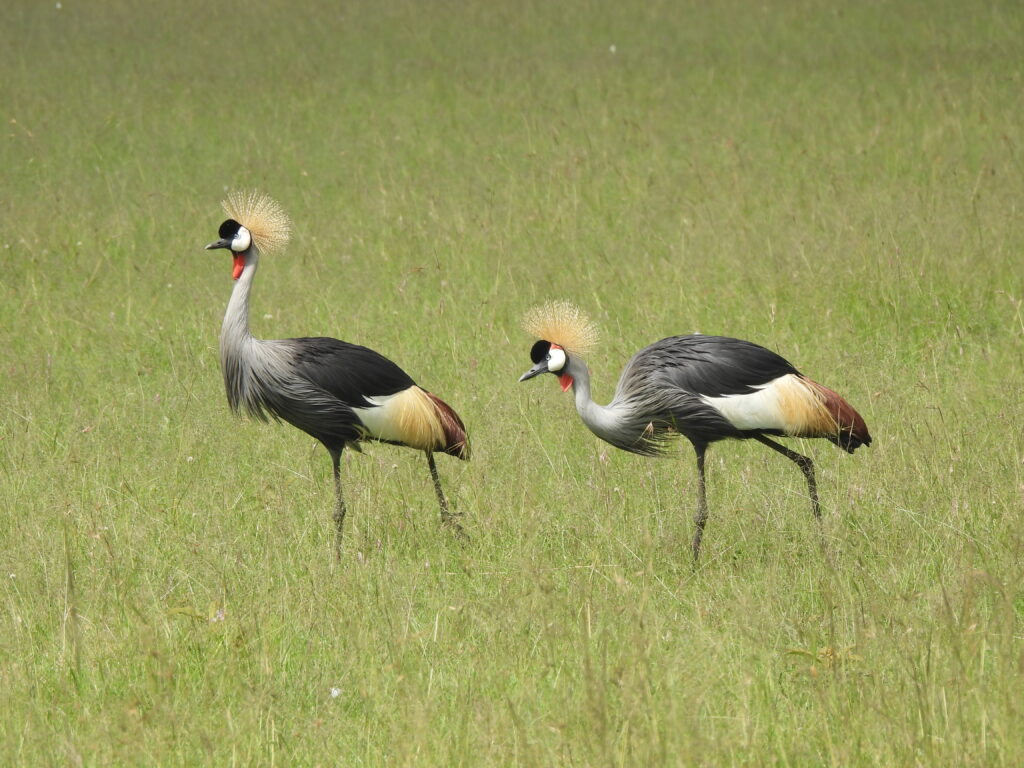
The area is famous for the millions of blue wildebeest (Connochaetes taurinus) that cross the Mara River and graze over one of the most productive grassland plains in the world, along with tens of thousands of plains zebras (Equus quagga), impalas (Aepyceros melampus), Grant’s gazelles (Nanger granti), Thomson’s gazelles (Eudorcas thomsonii), and buffaloes (Syncerus caffer).

We encountered great numbers of the main herbivore species in the area despite most of their populations being on the Tanzanian side of the river. However, savanna elephants (Loxodonta africana) were particularly striking, as we could see very large herds in the far distance. Spotting spotted hyenas (Crocuta crocuta) walking in daylight was also quite astonishing.
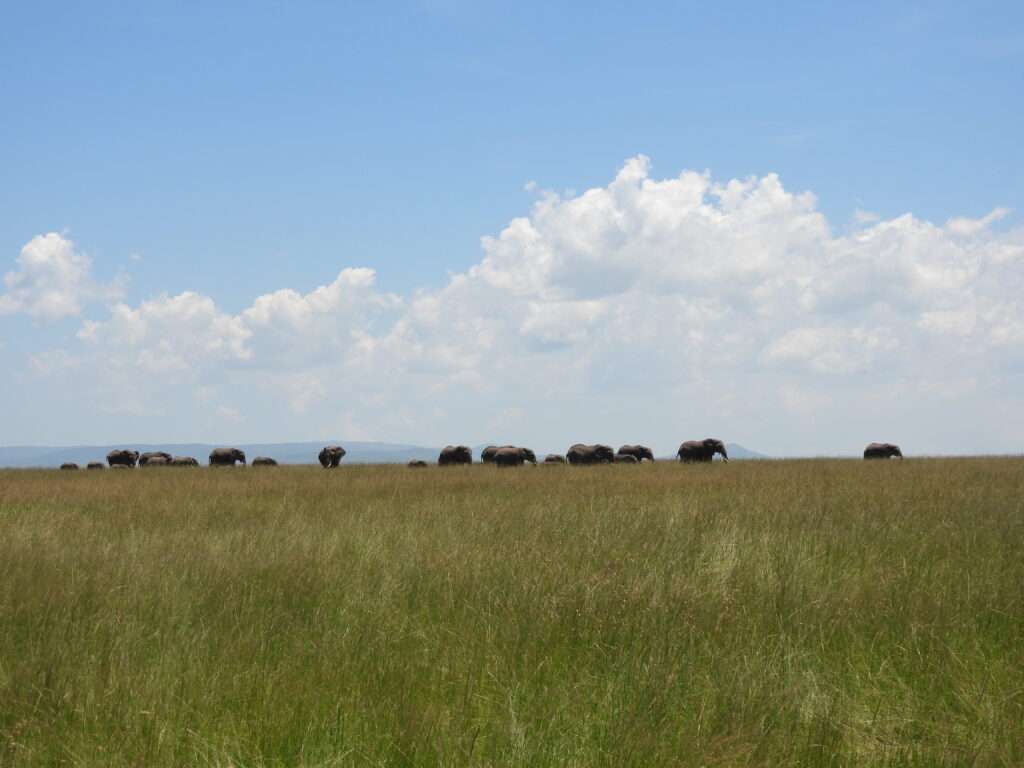
Large birds could also be seen in the grasslands, including the charismatic gray crowned cranes (Balearica regulorum) and the massive common ostriches (Struthio camelus). Some Kori bustards (Ardeotis kori) foraged at close range while others kept their distance. One of my colleagues even spotted the only secretarybird (Sagittarius serpentarius) of our trip, quite far away.
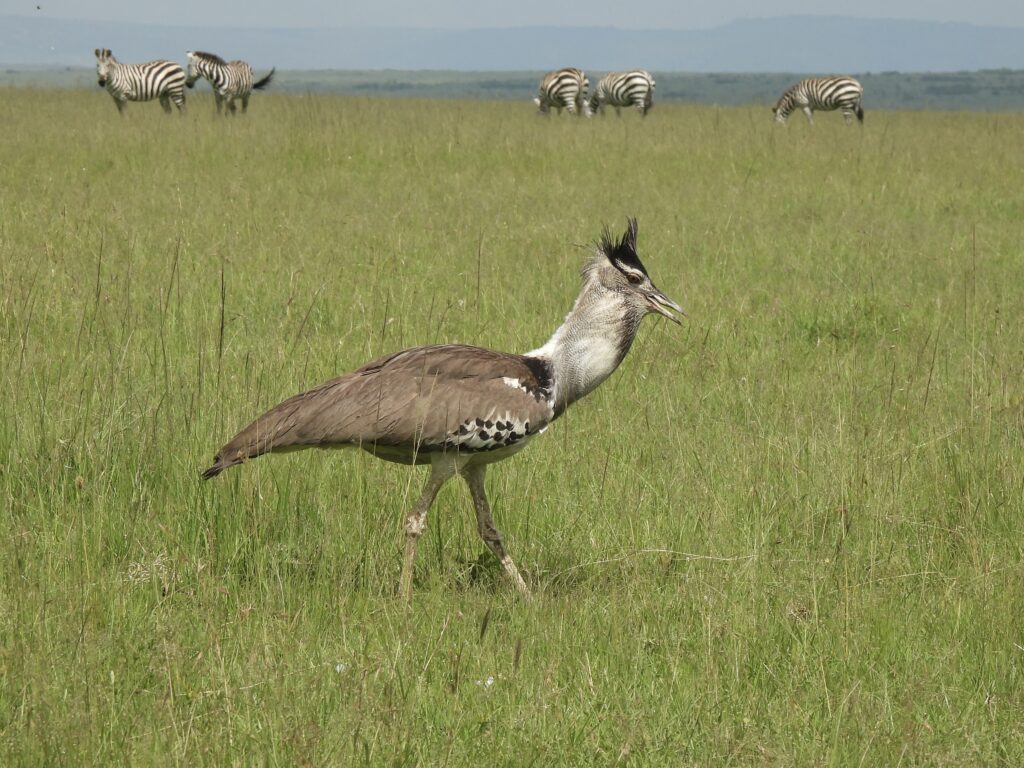
Our professors encouraged us to appreciate the different compositions of grasses along the road. Many passerines favored these grasses, including white-winged widowbirds (Euplectes albonotatus) and fan-tailed widowbirds (Euplectes axillaris). Good numbers of raptors patrolled for food, including gray kestrels (Falco ardosiaceus), pallid harriers (Circus macrourus) and Montagu’s harriers (Circus pygargus), lappet-faced vultures (Torgos tracheliotus) and hooded vultures (Necrosyrtes monachus), and several pairs of bateleurs (Terathopius ecaudatus).
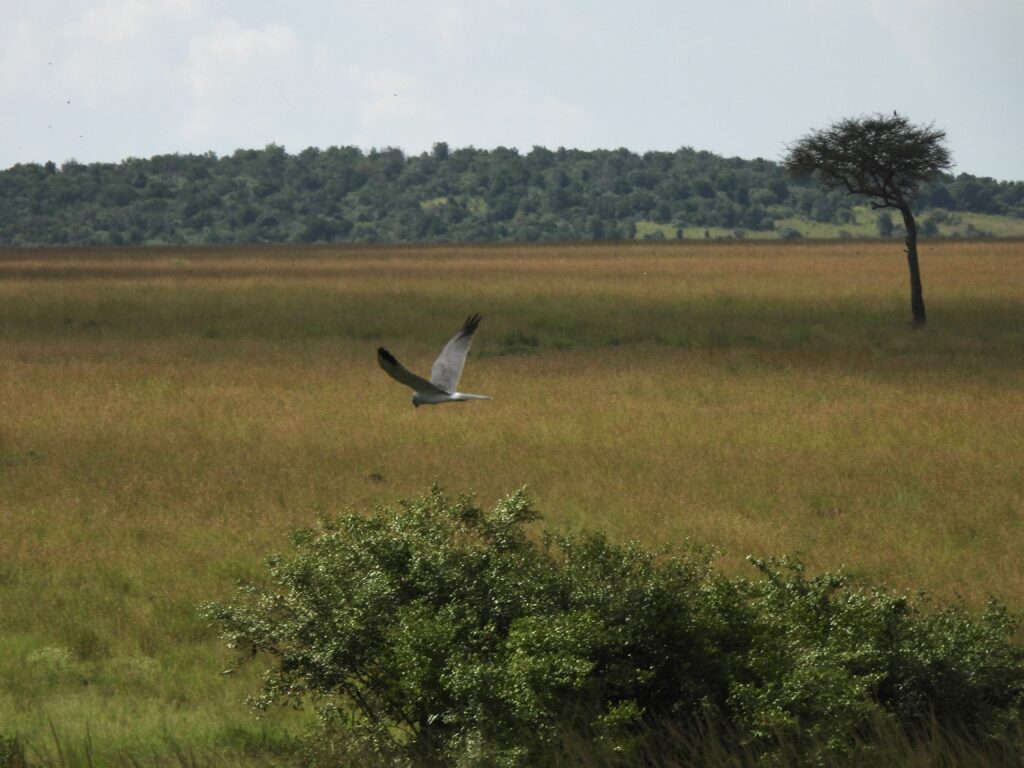
A few small waterholes held an impressive diversity of birds for their size. A flock of white-faced whistling ducks (Dendrocygna viduata), a wattled lapwing (Vanellus senegallus), a three-banded plover (Thinornis tricollaris), a green sandpiper (Tringa ochropus), a wood sandpiper (Tringa glareola), and two hadada ibises (Bostrychia hagedash) shared a tiny puddle next to the dirt road.
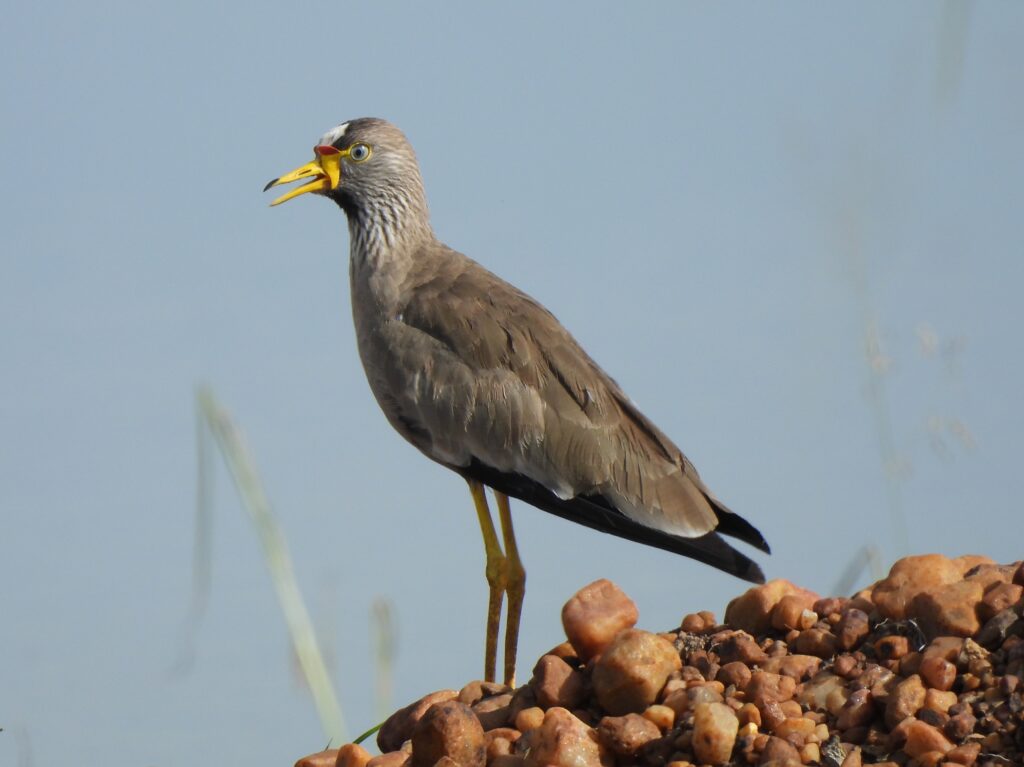
Bushes in the Maasai Mara are also quite dense, some growing right next to ponds. Not only did some raptors rest on them, but a good diversity of passerines could be found there too. Hamerkops (Scopus umbretta), lilac-breasted rollers (Coracias caudatus), families of African gray flycatchers (Bradornis microrhynchus), rufous-naped larks (Corypha africana) and fawn-colored larks (Calendulauda africanoides) were among the birds seen in different Acacia tree species, as well as good numbers of olive baboons (Papio anubis) and vervet monkeys (Chlorocebus pygerythrus). The highlight in the bushes was an unexpected spotted eagle-owl (Bubo africanus) at roost — what a stunner!
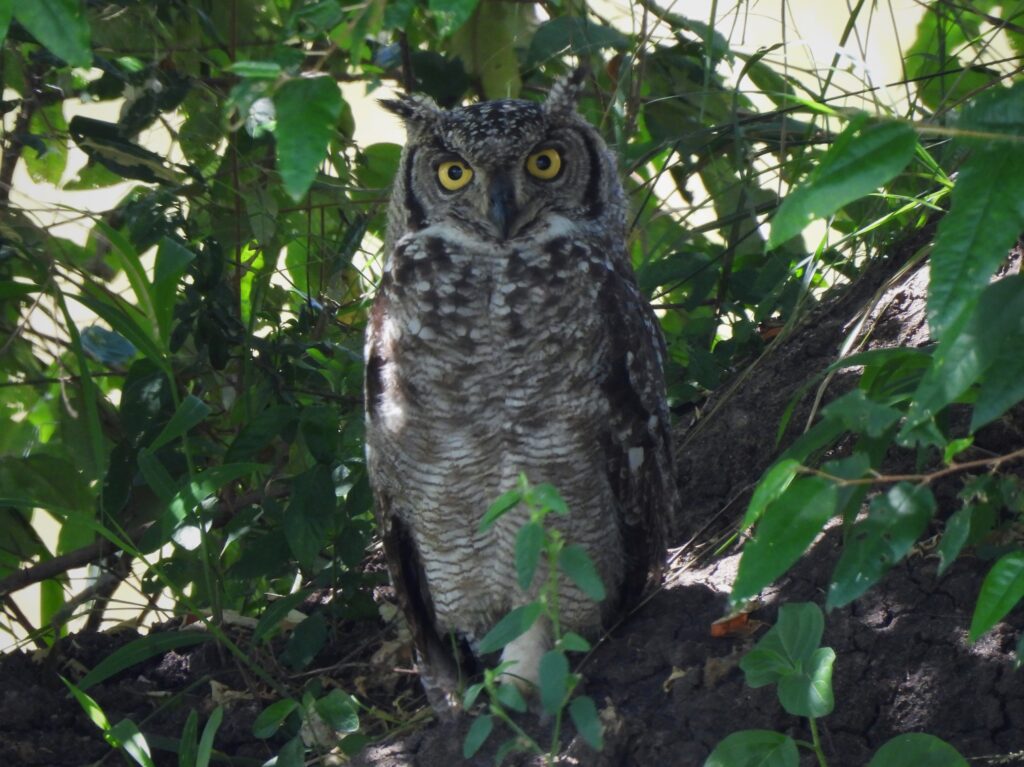
While looking for certain mammals, we bumped into the hard reality of the Maasai Mara — and many other African nature reserves. Our drivers suddenly turned around after hearing that someone had spotted lions on the radio. We ended up waiting for a good 20 minutes in a very long line of jeeps around a single Acacia tree where a few predators were resting. In my case, I managed to spend some good time browsing the grasses for widowbirds and watching a pair of gray-backed fiscals (Lanius excubitoroides) foraging in the Acacia.
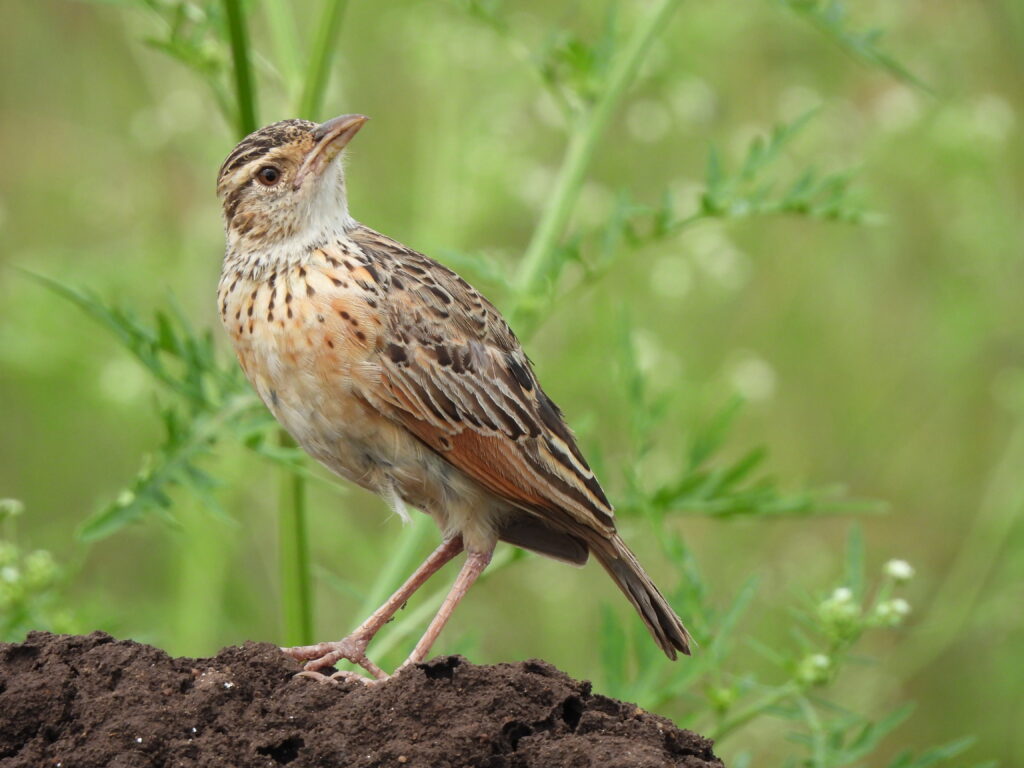
These long lines of safari vehicles — and the clear effect they have on the behavior of wildlife — are the bittersweet part of wildlife watching in these prime locations. We finally got sight of a pride of over 20 lions trying to rest under the heat. While these animals did not seem particularly bothered by our presence, we read research and heard stories of instances when other species either grow sensitive to or even take advantage of the constant presence of vehicles.
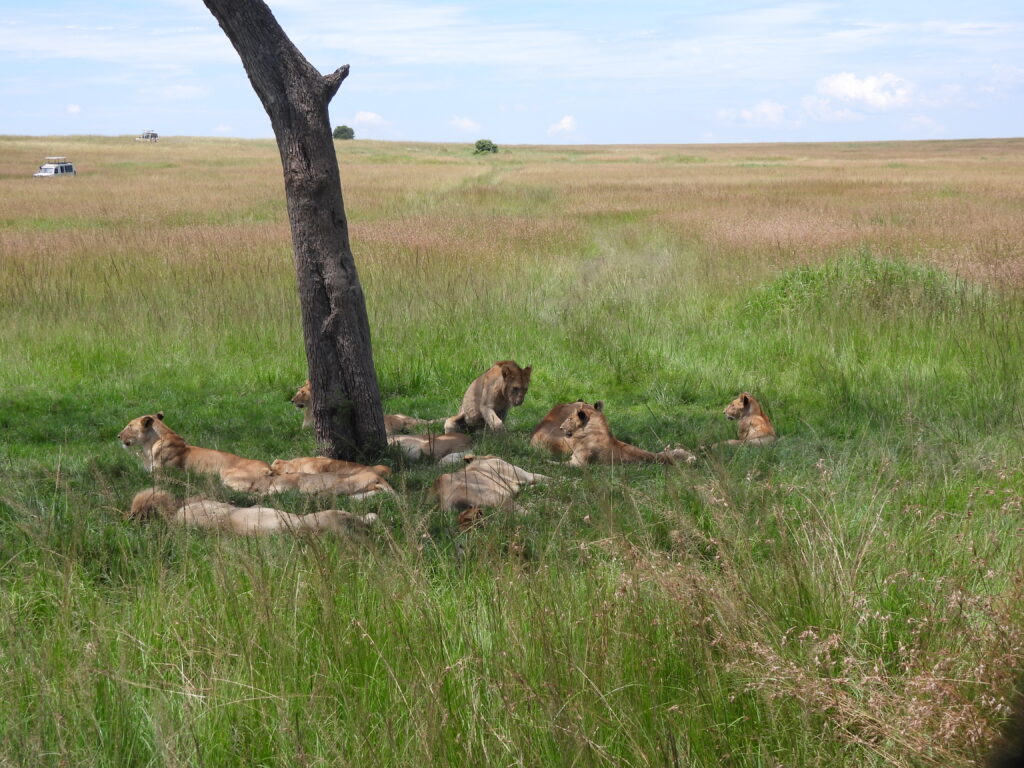
We had lunch under an Acacia tree — which the drivers circled twice to ensure no predators were resting nearby. Bateleurs cycled overhead, and some winding cisticolas (Cisticola marginatus) and plain-backed pipits (Anthus leucophrys) flitted in the surroundings. We were surrounded by dozens of savanna elephants (Loxodonta africana) in all directions and distances, as far as the eye could reach. Yet perhaps even more striking was the diversity of insects among the grasses and on the tree: beetles, hoverflies, and butterflies of many kinds.
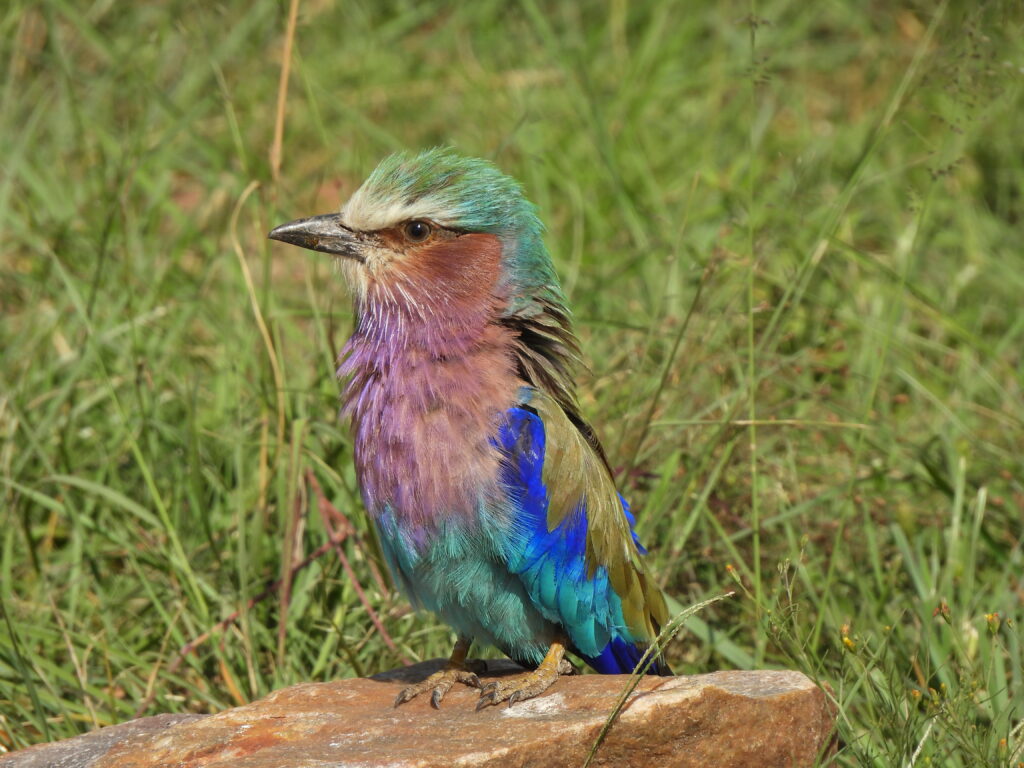
By then we had seen some of the iconic African savanna mammals — including several sightings of lions (though no other cats!) — plus numerous life-long dreamed birds. But one of the top sights of the day was perhaps also one of the most unexpected. The kongoni, the cokii form of hartebeest (Alcephalus busephalus) is an antelope I was not familiar with — but its elegance and beauty struck me. A couple of these regal herbivores posed for us right next to the road.
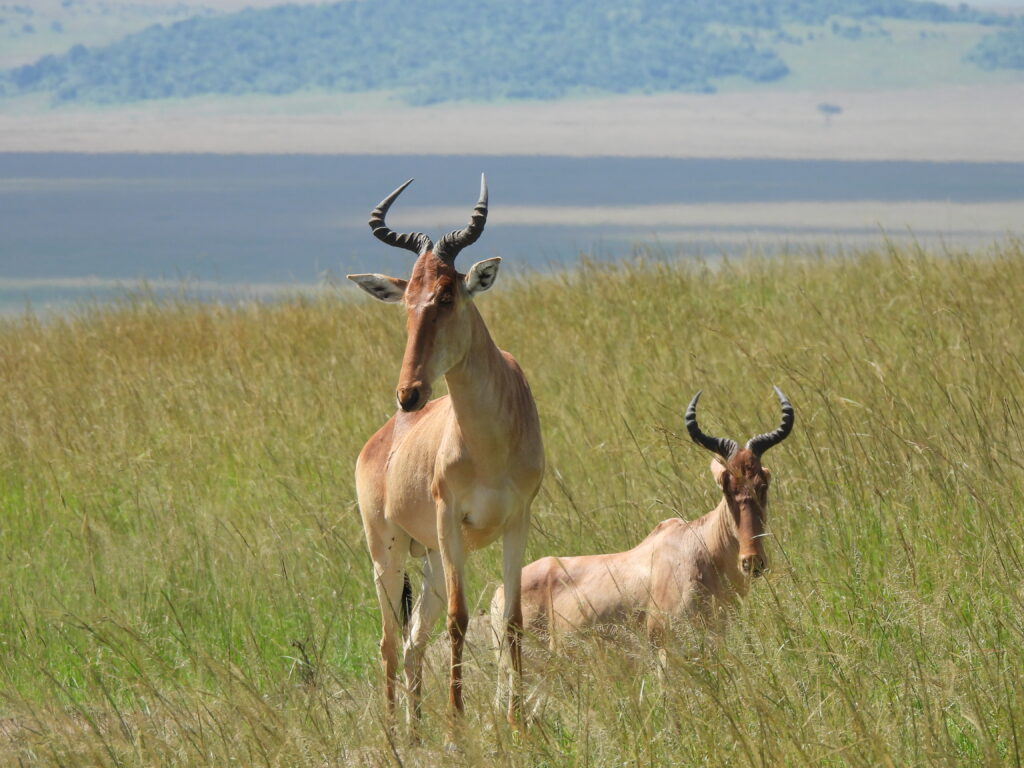
After lunch, we finally reached the mighty Mara River, at one of the legendary crossings where millions of herbivores pass twice every year — and where the very Nile crocodiles (Crocodylus niloticus) trying to feed on them lurked in the water. The scenery was spectacular, indeed as if lifted from a wildlife documentary, even without animals actively crossing.
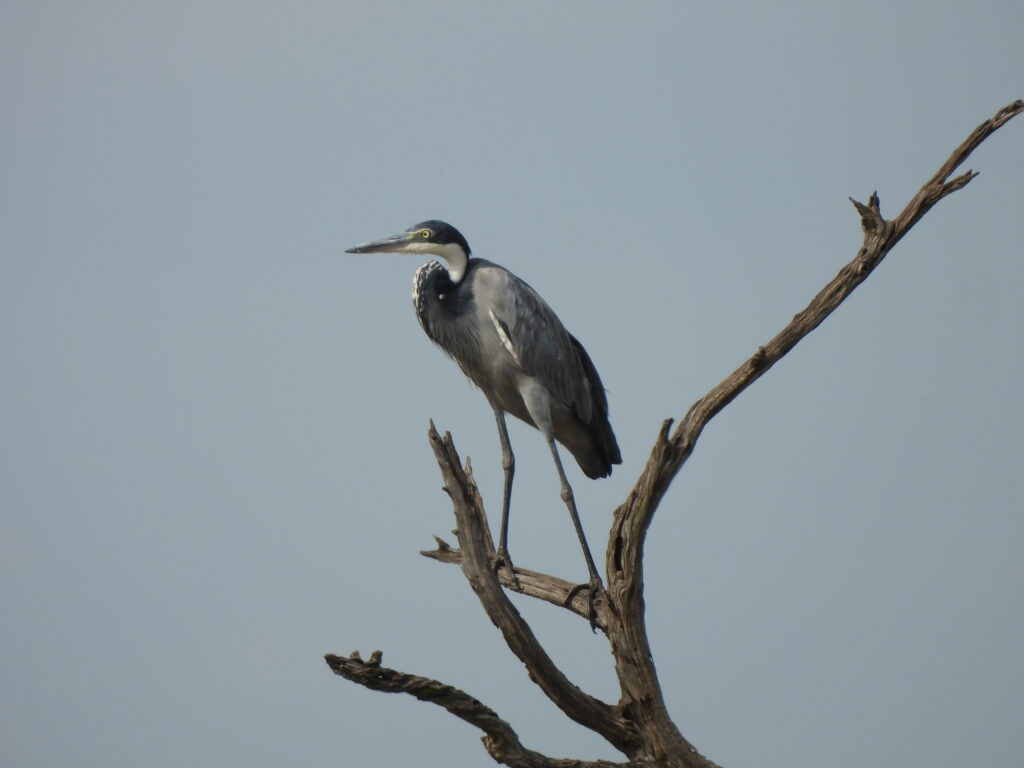
Some funny common sandpipers (Actitis hypoleucos) joined the red-billed oxpeckers (Buphagus erythrorhynchos) and walked on top of the noisy hippos (Hippopotamus amphibius) lounging at the bottom of the river, while a small colony of little bee-eaters (Merops pusillus) nested on the river bank. White-browed coucals (Centropus superciliosus), black-headed herons (Ardea melanocephala) and stout cisticolas (Cisticola robustus) were also around.
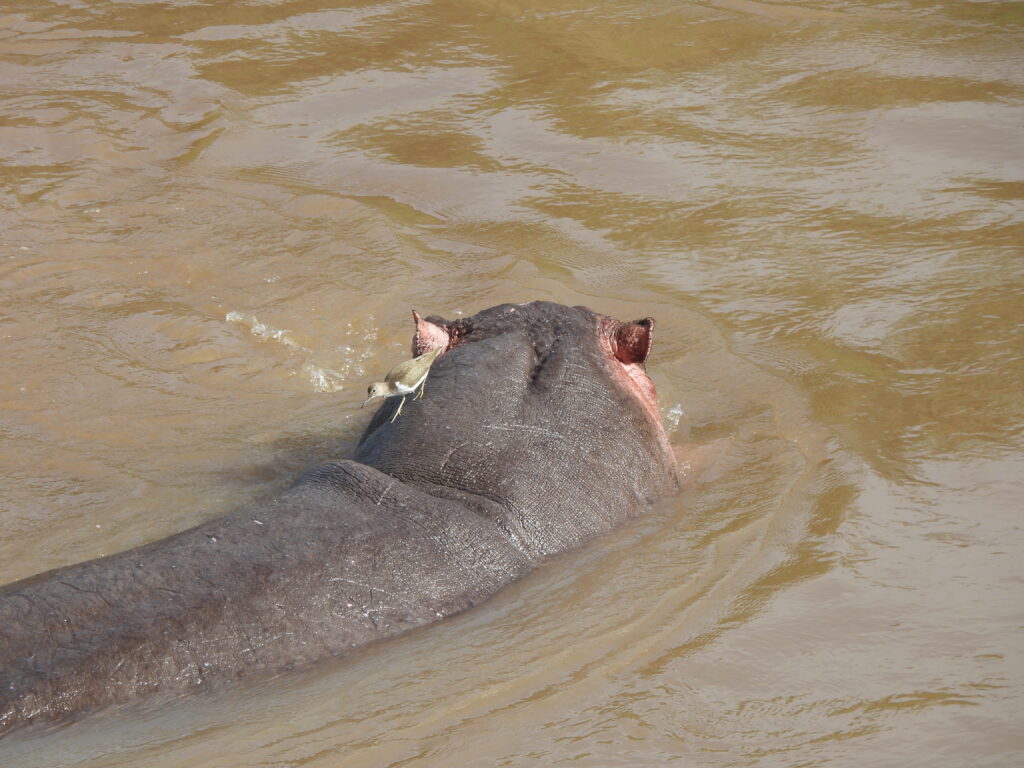
The grass was particularly greener close to the Mara River, and large herds of topis (Damaliscus lunatus), Grant’s gazelles and plains zebras roamed at very close range. A small group of spur-winged lapwings (Vanellus spinosus) foraged on the grass, and we were most surprised to bump into a spotted hyena sleeping right at the edge of the road.
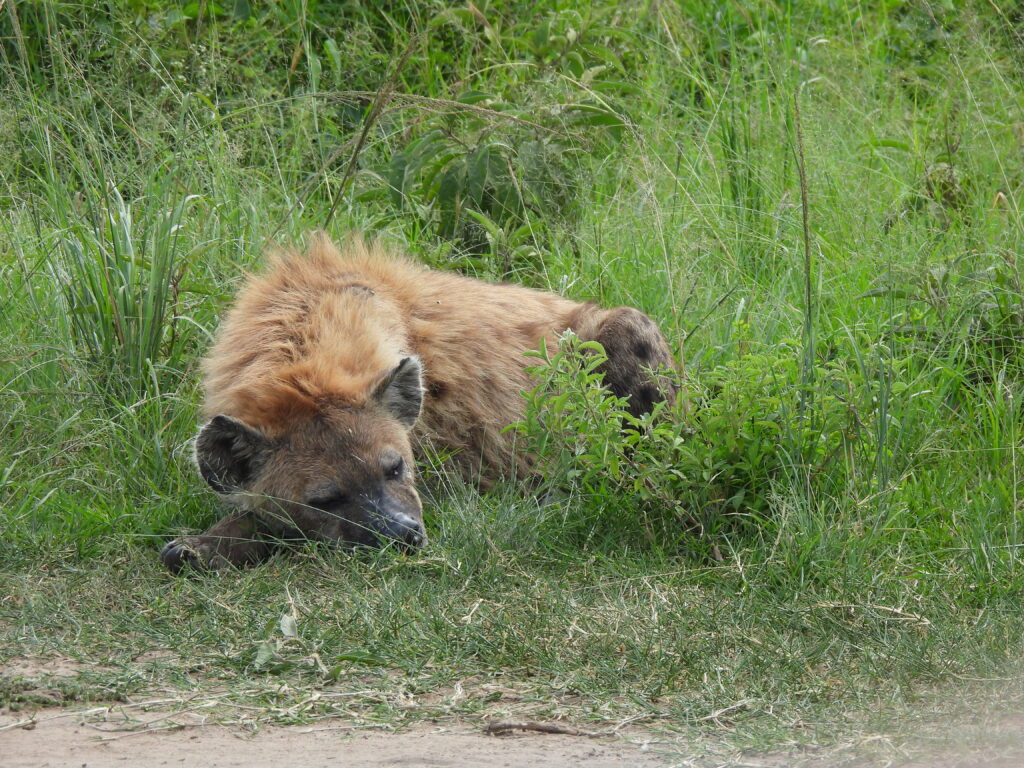
The worst part of our visit to Maasai Mara was leaving. And not particularly because we dipped many of our target mammals and birds. The catching green infinity was hard to leave as the sun started to sink. Visiting this place with our professors was particularly fruitful, as they profiled how some global ecology theories operate on this massive prime habitat. We drove back through a fantastic sunset, with herds of impalas (Aepyceros melampus) and Maasai giraffes (Giraffa tippelskirchi) on the road and a fantastic last-minute addition as a Temminck’s courser (Cursorius temminckii). As beautiful as the closing scene was, I was left wanting more.

